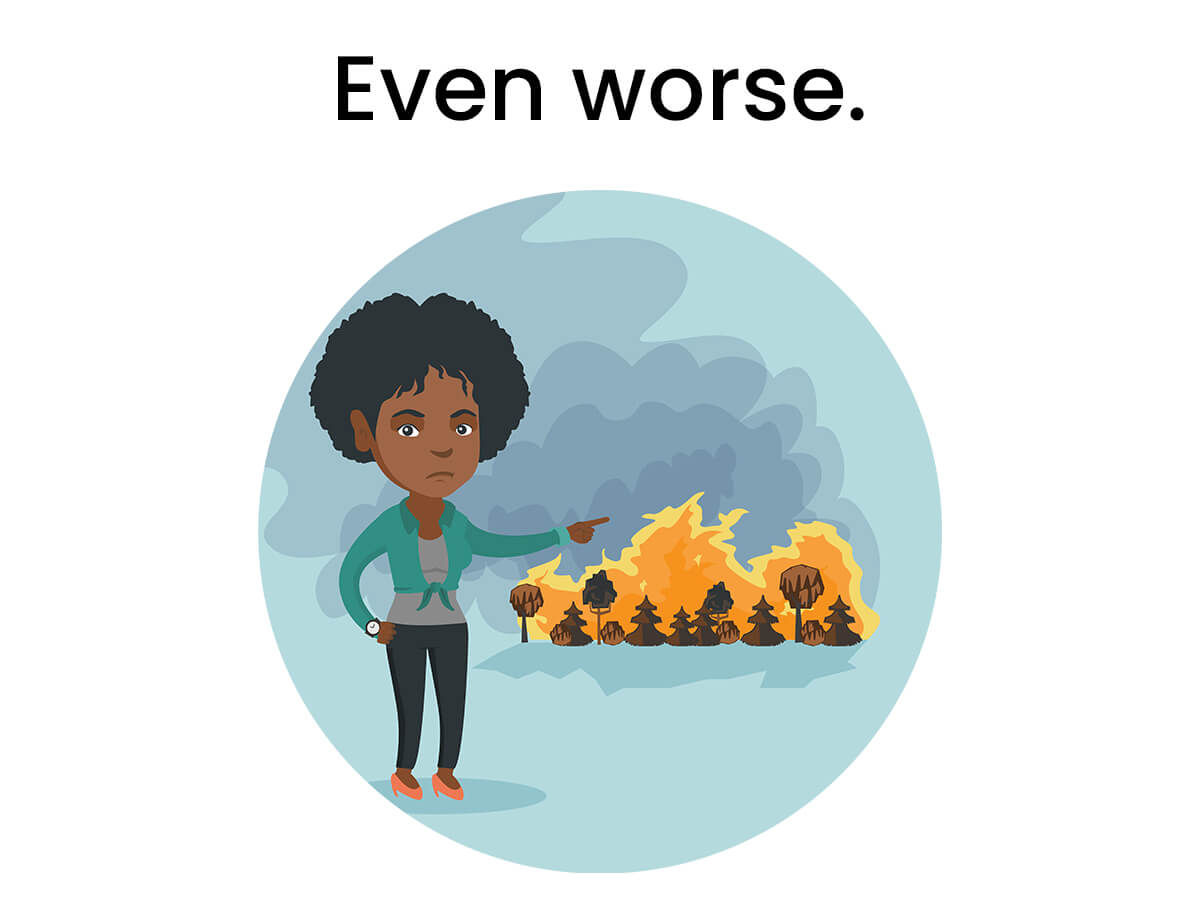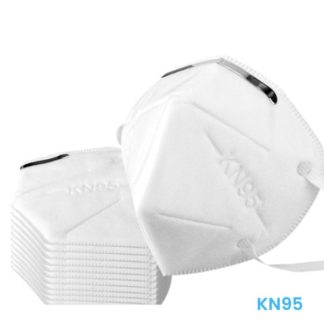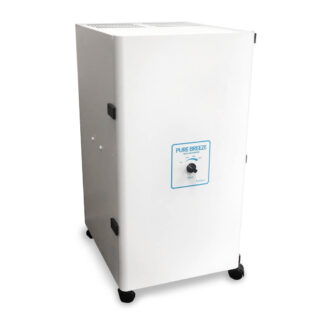
Smoke is very dangerous.
Smoke. It’s bad.
How bad? Very bad. Worse than you thought.
A recent article from the LA Times shines light on what smoke pollution from all these wildfires can actually contain, which includes:
- Heavy metals like lead (Pb)
- Fungi
- Bacteria
- Airborne pathogens
We already know from the EPA that smoke inhalation can cause:
- Burning eyes.
- Runny nose.
- Coughing or wheezing.
- Phlegm buildup.
- Difficulty breathing.
- Chest pain or palpitations, especially for those with heart disease.
The LA Times article makes special note of a couple of troubling studies:
- Smoke from the Camp fire in 2018 was particularly noxious because it contained particulates from burned homes as well as vegetation. (California Air Resources Board.) Data from air filters and toxic monitors showed that smoke from the fire was in many ways more harmful than that of three other large fires that burned mostly vegetation that year (the Camp fire burned nearly 19.000 buildings).
- Wildfire smoke may greatly increase susceptibility to COVID-19. (Journal of Exposure Science and Environmental Epidemiology.) The study found that an increase in particulate matter from wildfire smoke was associated with a nearly 18% increase in the number of coronavirus cases.
This article is particularly timely as a blanket of smoke from an outbreak of wildfires in western US and Canada covers the entire North American continent. Record-breaking drought and heat coinciding with rising COVID-19 cases spell looming trouble everywhere.
Apparently, there’s a disturbing “negative synergy” between wildfires and the pandemic. Smoke can compromise a person’s respiratory system, increasing COVID-19 vulnerability; similarly, COVID-19 attacks a person’s respiratory system and can make them more vulnerable to the harmful effects of smoke inhalation.
And smoke danger can outlast the fire that caused it for long periods of time. If you’re in a fire-vulnerable area, see our list of air safety tips for before, during, or after a wildfire here. If you’re anywhere on the North American continent, though, we recommend our Pure Breeze HEPA Air Purifier to filter the air of toxins and aerosols.
Per the LA Times article, researchers from both studies say smoke is becoming increasingly inevitable, so protection against smoke exposure should be a top priority.
Keep your air as safe as possible from both the COVID-19 virus AND smoke pollution.
-
 KN95 Face Masks – CE Certified – Box of 10$15.00View Details
KN95 Face Masks – CE Certified – Box of 10$15.00View Details -
 KN95 Face Masks – CE Certified – Box of 50$70.00View Details
KN95 Face Masks – CE Certified – Box of 50$70.00View Details -
 Pure Breeze HEPA Air Purifier – 10360A$1,926.86 – $2,055.86View Details
Pure Breeze HEPA Air Purifier – 10360A$1,926.86 – $2,055.86View Details
Talk to Vaniman today about large orders.
SCHOOLS: contact Vaniman about special pricing for schools and universities.
The Pure Breeze HEPA Air Purifier is a portable air cleaner designed for both powerful and quiet operation. Multiple stages of filtration protect against smoke particles and bioaerosols (that may carry viruses), tested to be over 99.99% effective against particles down to 0.3 micron in size.
N95 and KN95 masks are recommended by the California Department of Public Health, effective against both viruses and smoke.
Sources
LA Times: From heavy metals to COVID-19, wildfire smoke is more dangerous than you think – https://www.latimes.com/california/story/2021-07-22/studies-connect-wildfire-smoke-side-effects-covid-19-risk
EPA: How Smoke from Fires Can Affect Your Health – https://www.epa.gov/pm-pollution/how-smoke-fires-can-affect-your-health
CA Dept. of Publich Health: Get the Most out of Masking – https://www.cdph.ca.gov/Programs/CID/DCDC/Pages/COVID-19/Get-the-Most-out-of-Masking.aspx
